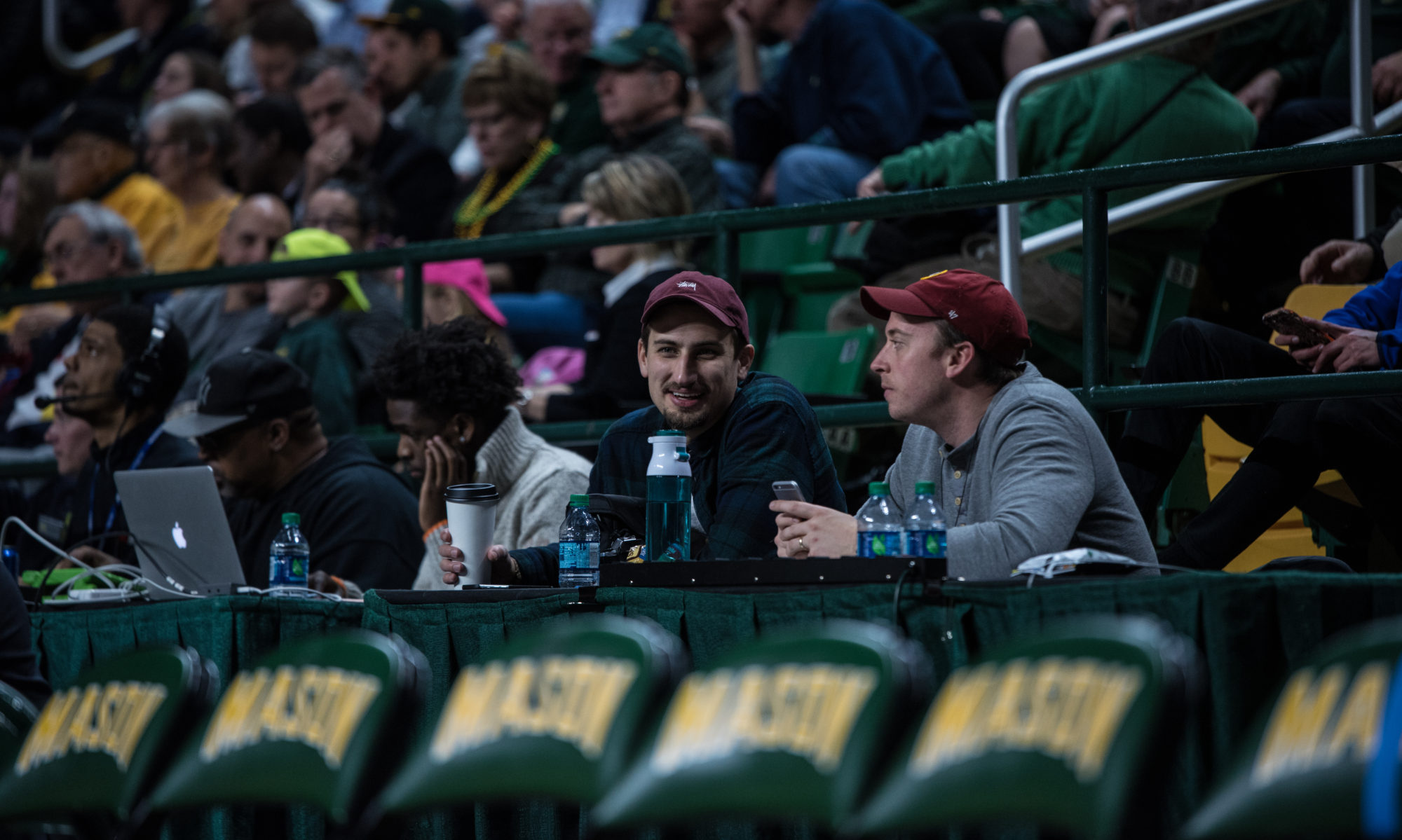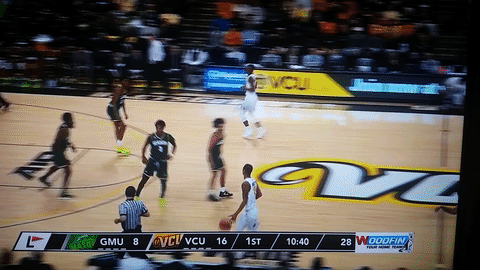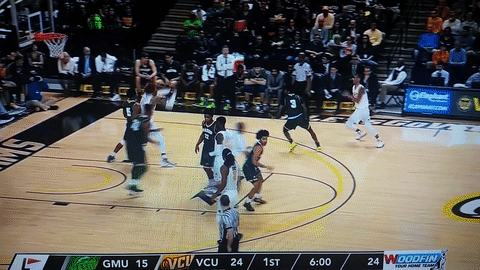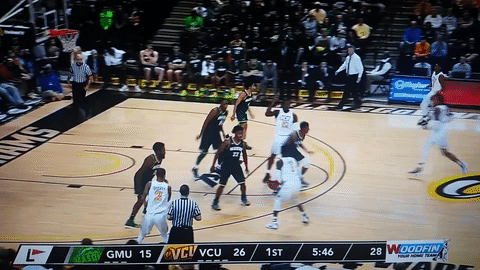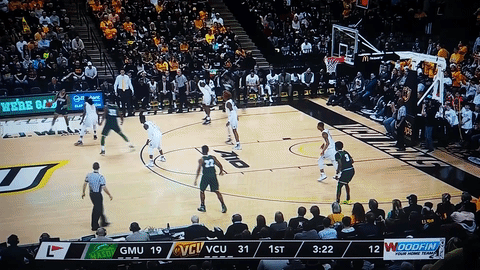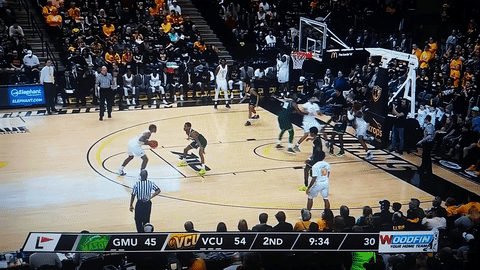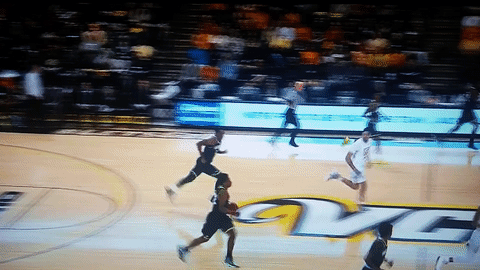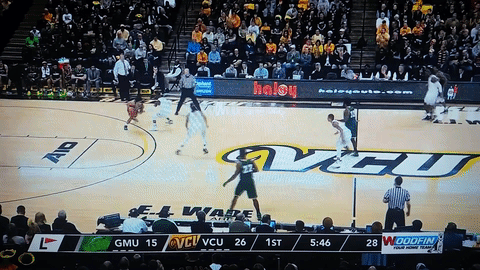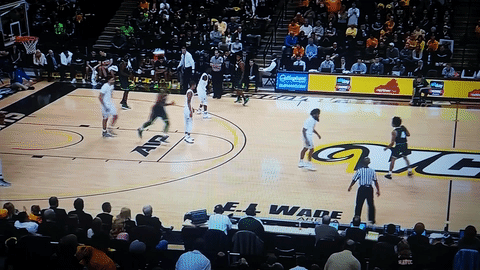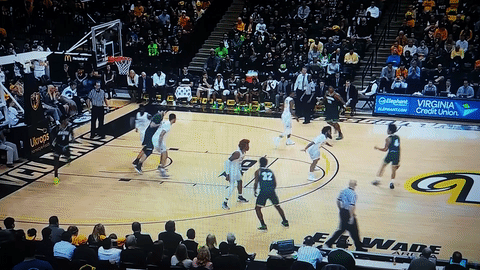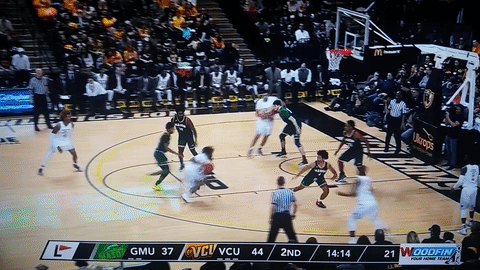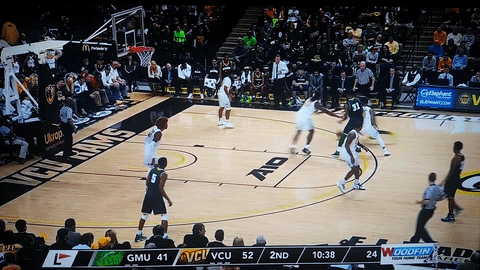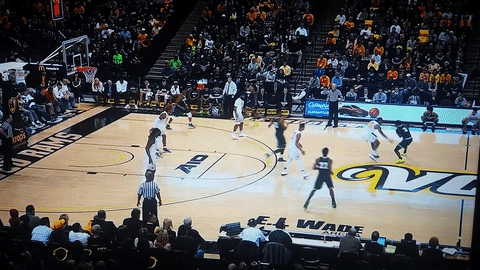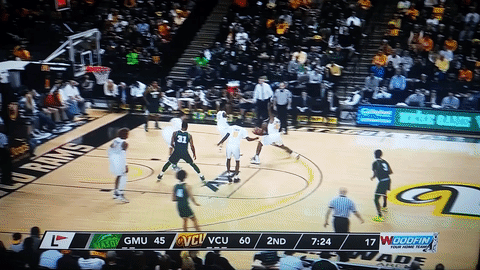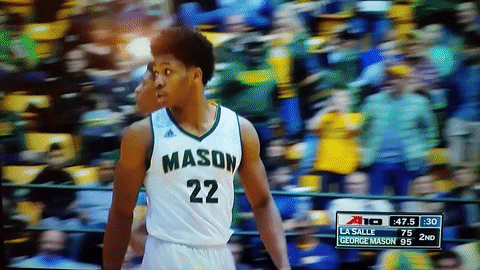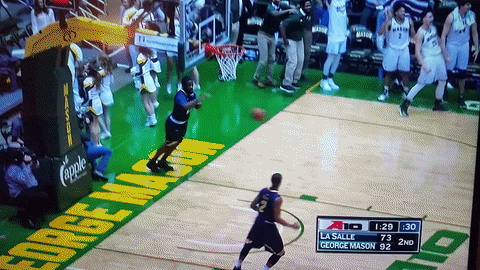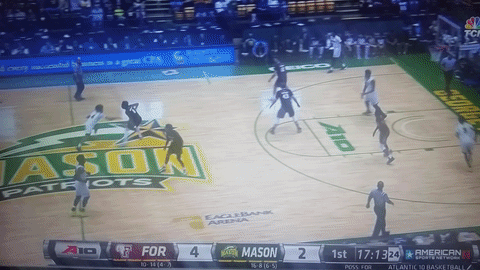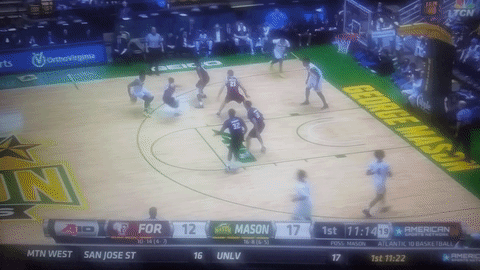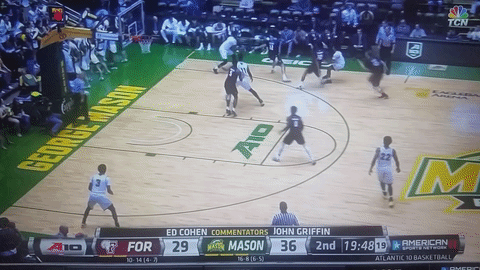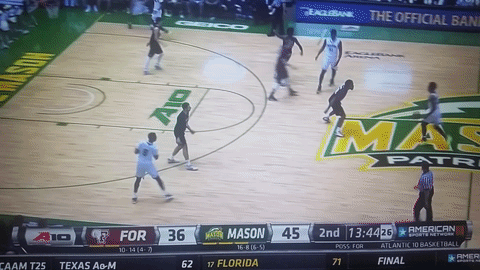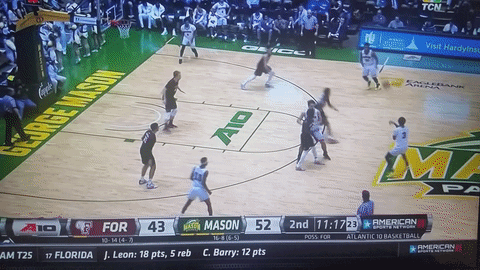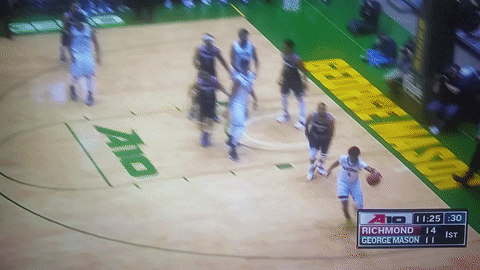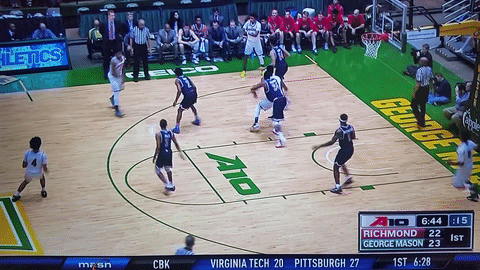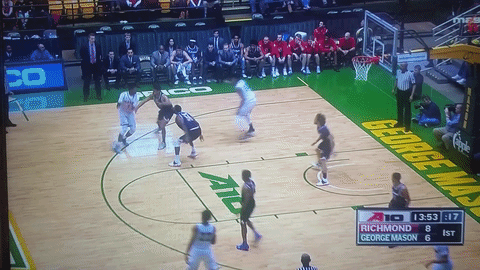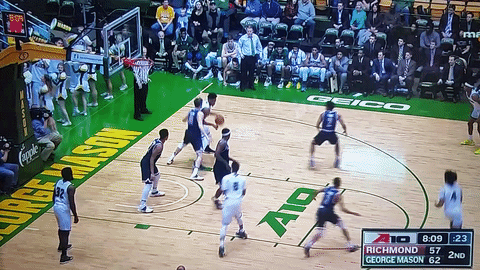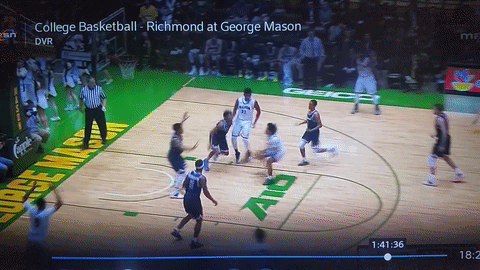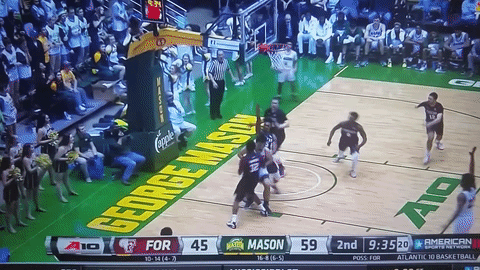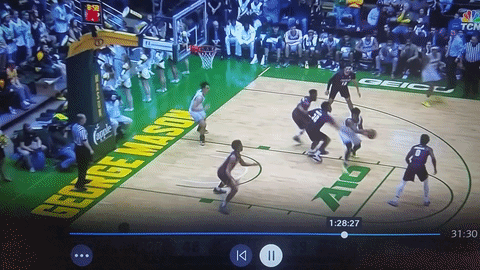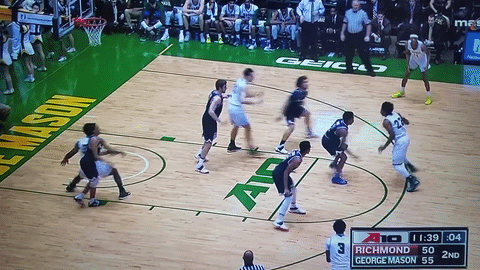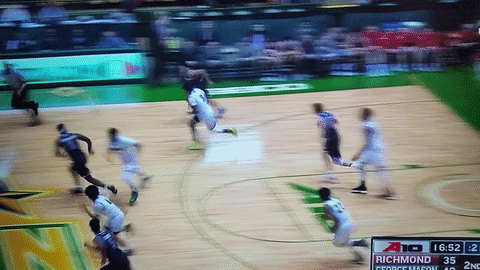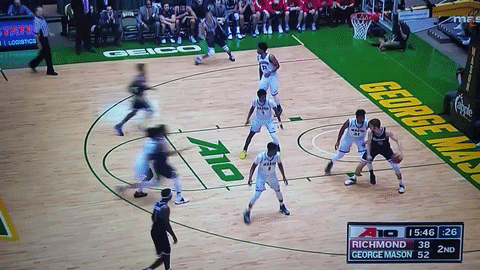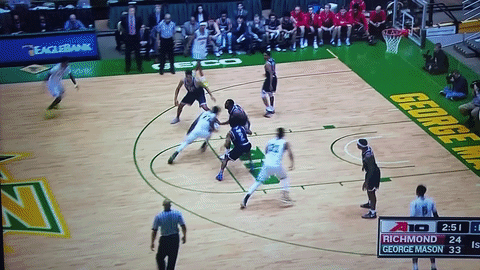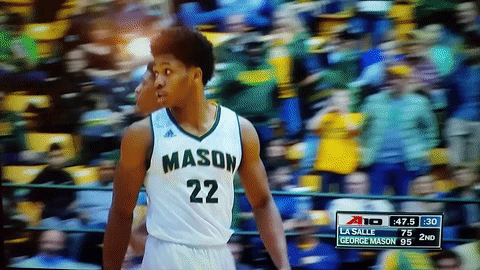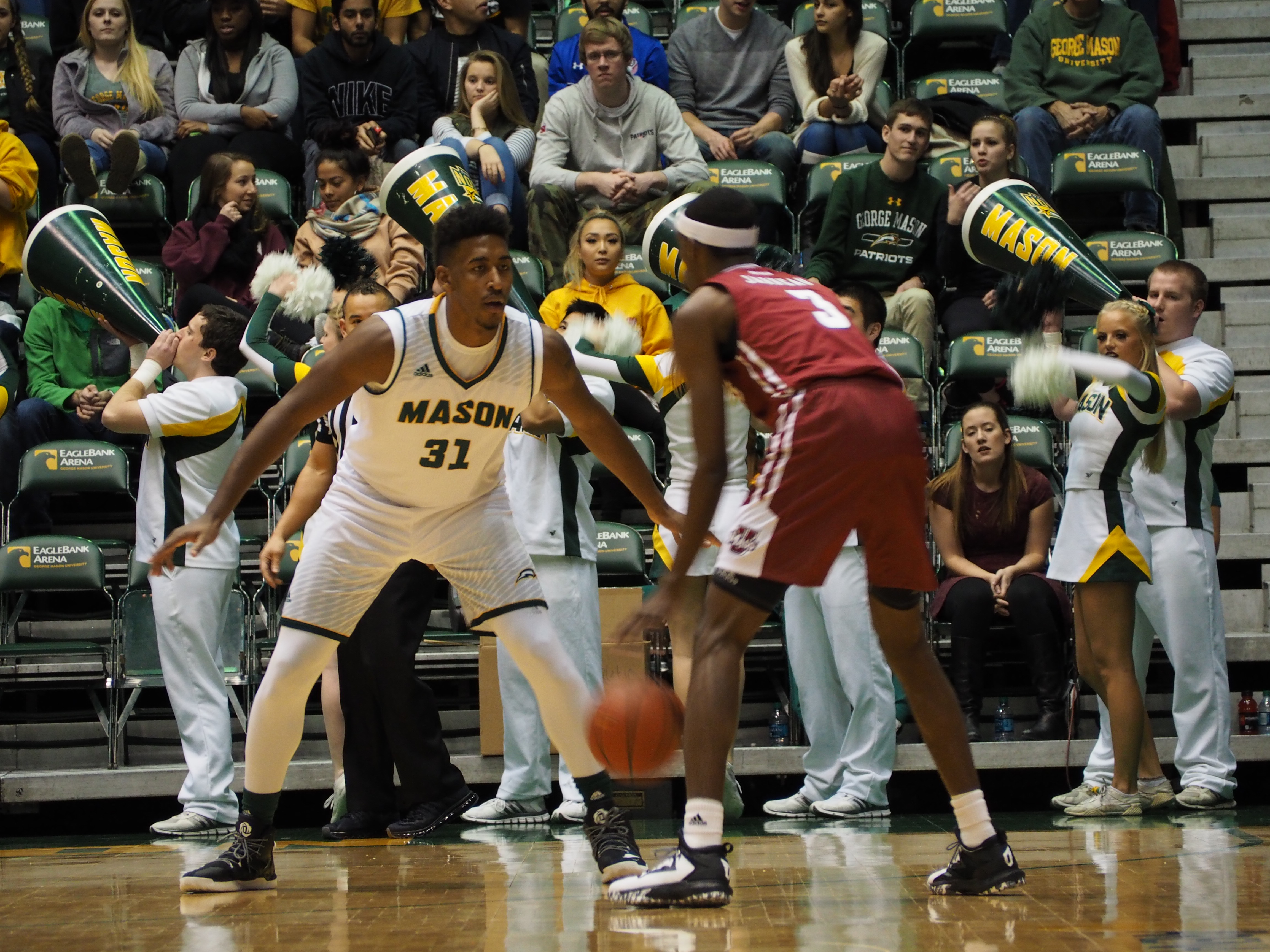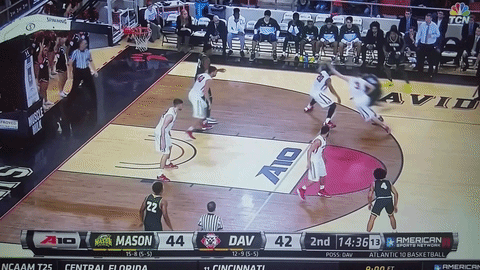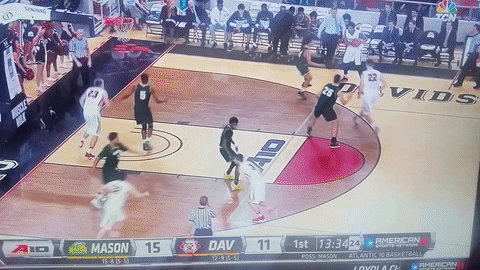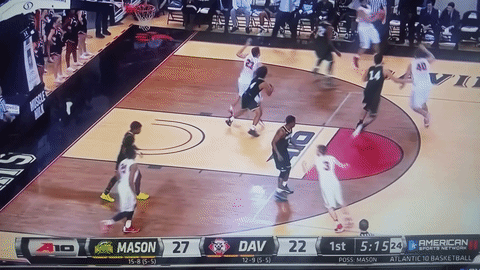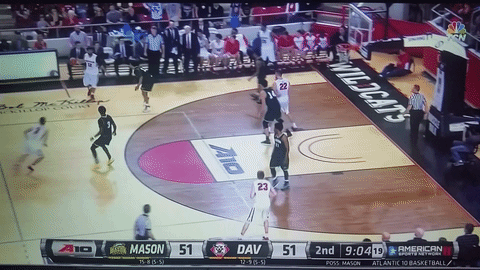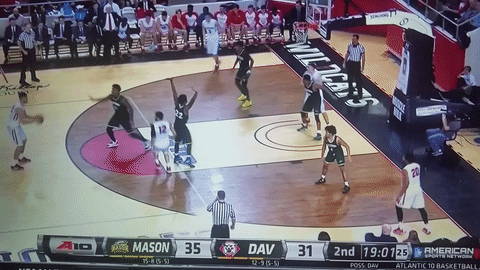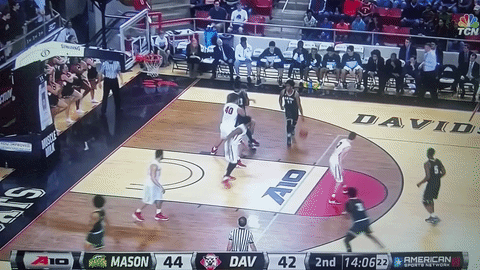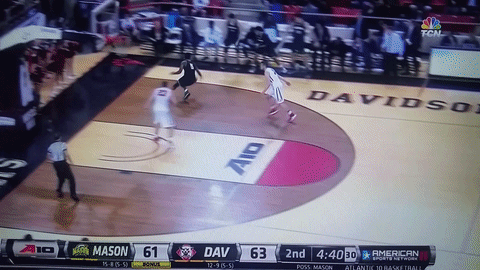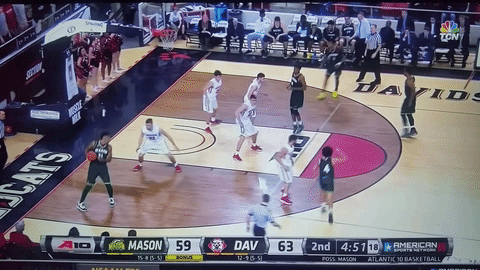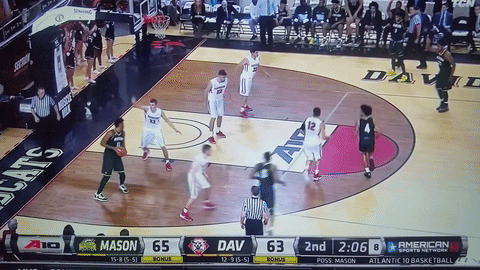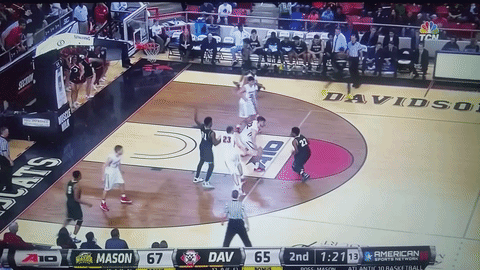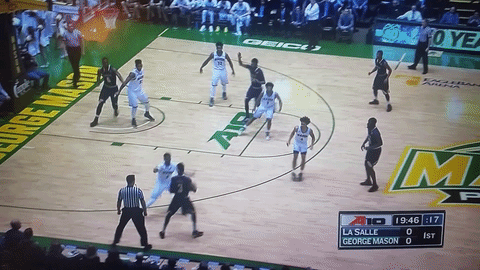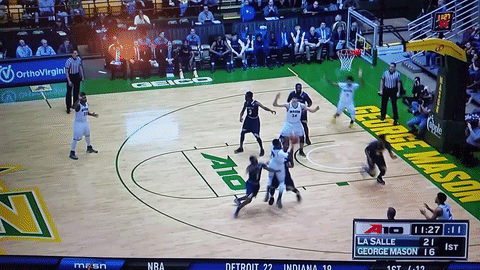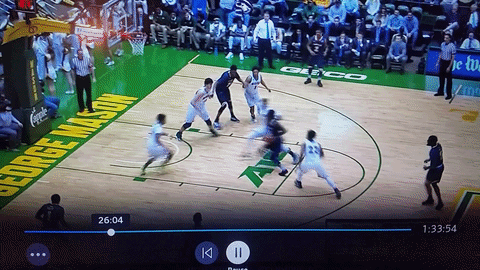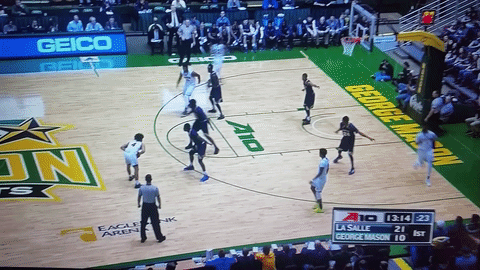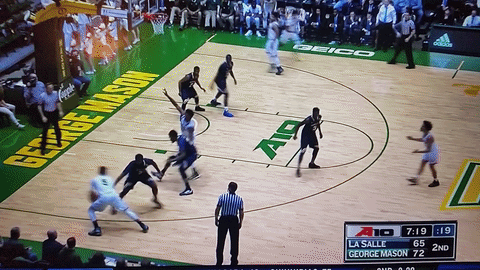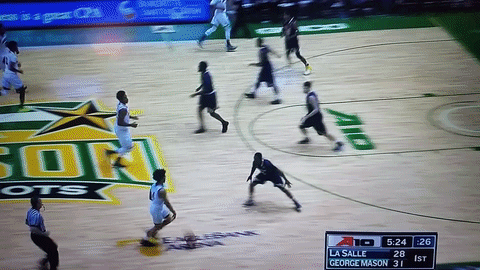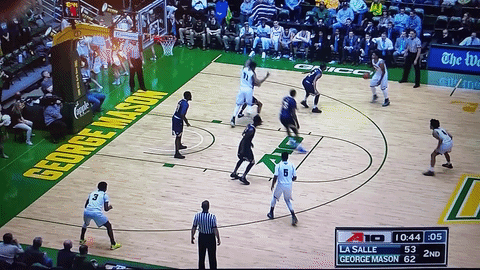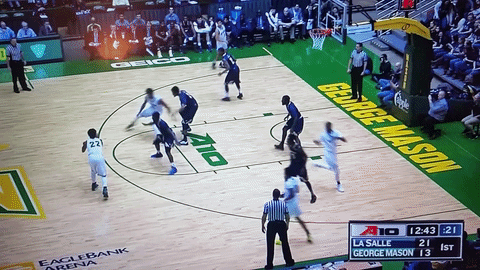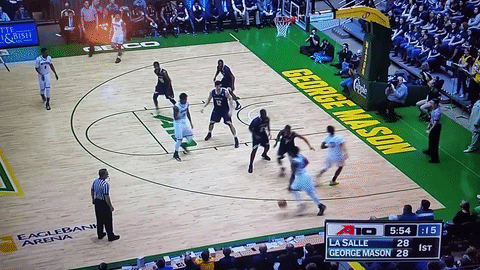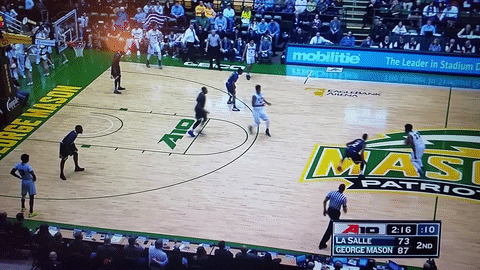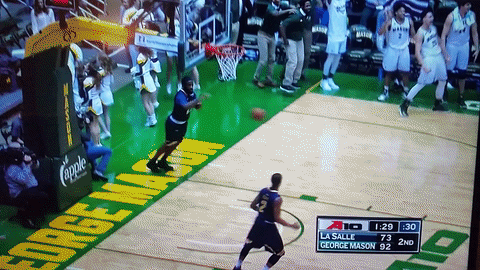Happy Friday! It’s time to check back in on the A10 Player of the Year race. To read my primer on these rankings, click here. If you’re not going to take the bait and give me a click, here’s what we’re trying to do:
– Rank A10 POY candidates in the order I currently have them, not to predict who wins what
– I heavily favor usage, workload, and efficiency
– I’m looking at conference only stats. Why? No reason. My rankings, my rules.
– I use PPFGA (points per field goal attempt) instead of TS% of eFG%. PPFGA answers the question you really want to ask, i.e. how many points does a guy score every time he uses a shot attempt?
– I’m not trying to be contrarian, but the numbers I’m using will sometimes yield different results than what some other people have. That’s a good thing! There’s a fair amount of groupthink among the name brand players.
Before we get to the rankings, I want to show you something:
Player A: 13.3 points, 2.9 rebounds, 4.8 assists, 1.5 steals, 0.1 blocks, 20.2 PER, 21.8% USG, 1.43 PPFGA
Player B: 13.7 points, 4.7 rebounds, 3.1 assists, 1.3 steals, 0.9 blocks, 18.9 PER, 26.7% USG, 1.27 PPFGA
Player C: 15.4 points, 5.1 rebounds, 1.5 assists, 1.3 steals, 1 block, 24.6 PER, 27.6% USG, 1.69 PPFGA
Player C clearly has the most well-rounded resume, right? More points and rebounds, similar combined steals and blocks to Player A, and his efficiency and usage numbers blow the other two out of the water. The only thing he doesn’t have is assists, but he more than makes up for that everywhere else.
In case you’ve tried to guess, I don’t think anyone is going to get this.
Player A: Scoochie Smith
Player B: Charles Cooke
Player C: Kendall fucking Pollard!
Pollard was my dark horse for A10 POY last week and I see no reason to come off that now. He’s such a dark horse that Dayton people don’t even talk about him as a player of the year candidate. You hear Cooke thrown around a lot, Scoochie thrown around a bit less, but I don’t think either of them has a resume that holds up to Pollard’s. He’s scoring more points on a larger workload, and he’s crazy efficient while doing it. He’s also just as valuable defensively, if not more so, than his teammates, and he’s got a better offensive rating and a better defensive rating. Stats aren’t the end all be all – one of the shortcomings of doing it my way is that it kind of hurts players on good teams who cut into each other’s production – but Scoochie and Charles don’t have great efficiency ratings, and Pollard is doing it all on both ends of the court.
Now, some Dayton fans may say this is crazy. I’ve watched a couple Dayton games and Pollard doesn’t really jump off the screen the same way Cooke does. But I’ve got a very scientific system where I plug these arbitrarily chosen statistics into a spreadsheet, sprinkle in a defensive evaluation that you can’t see, then use my brain to decide which resume looks better. As far as the Dayton guys go, that’s Pollard at the moment.
Let’s get to the rankings:
IN THE LEAD: Jaylen Adams, St. Bonaventure
19.2 points, 3.7 rebounds, 5.7 assists, 2.3 steals, 0.1 blocks
23.2 PER, 28.6% USG, 1.44 PPFGA
Jaylen Adams had a rough shooting game in the VCU debacle last week, but he made 14 of 15 free throws, which actually kept his production quite viable. His box score stats aren’t as impressive as some of the others on this list, but around these parts we take those 2.3 steals per game very seriously. Jaylen is part of a scheme that loves to jump passing lanes (teammate Matt Mobley is second amongst the contenders in steals), and he can act like more of a free safety when the man he’s defending moves to the weak side, which helps his steals total. But he’s also a very capable on-ball defender. He might not be the consensus favorite, but he’s leading here for now. He missed a chance to really solidify his claim here against VCU, so this ranking isn’t terribly confident.
JUUUUUST BEHIND: TJ Cline, Richmond
19.7 points, 9.1 rebounds, 6 assists, 1 steal, 0.2 blocks
27.5 PER, 28.9% USG, 1.46 PPFGA
Eye-popping numbers! He’s spinning the box score! How is he not in the lead?
TJ Cline cannot play a lick of defense. He gives the Spiders next to nothing for paint protection. He’s the consensus number one, because Player of the Year is an award for people who fill up the box score, but here he stays in second. I do think he’s the odds on favorite to win it, and if I were betting today, I’d bet on him – look at those numbers again – 2nd in points, 3rd in rebounds, and 1st in assists among people on the list. But if those numbers come back to the field a little bit, his rank at the two spot is tenuous.
GETTING WARMER: Marquise Moore, George Mason
17.4 points, 9.7 rebounds, 3.8 assists, 1.4 steals, 0.6 blocks
24.3 PER, 28.1% USG, 1.33 PPFGA
We have our first mover! Marquise is up to third this week, stealing this spot from Peyton Aldridge. Like Adams, Marquise is the primary creator and best on-ball defender on his team. He spent most of Mason’s game with Davidson matched up on Jack Gibbs and did an admirable job, holding Gibbs to 12 points on 5-12 shooting. Marquise’s lacking efficiency holds him back, as he does it all for a surprising Mason team – he’s a great defender, he’s the A10’s leading rebounder, and he’s carrying a tremendous workload for a team that has a short bench.
DARK HORSE: Kendall Pollard, Dayton
15.4 points, 5.1 rebounds, 1.5 assists, 1.3 steals, 1 block
24.6 PER, 27.6% USG, 1.69 PPFGA
As discussed above, Kendall Pollard is arguably the best player on the conference’s best team.
COMING BACK TO EARTH: Peyton Aldridge, Davidson
21.4 points, 8.5 rebounds, 2.3 assists, 1.3 steals, 0.8 blocks
27.1 PER, 25.9% USG, 1.44 PPFGA
Aldridge is still right in the thick of this thing, but he decreased slightly since last week in every single number I’m listing here. He’s fighting an uphill battle because he’s not the highest usage guy on his own team (that would be Gibbs) but his numbers are impressive enough to keep him in this conversation.
STILL IN CONTENTION
Justin Tillman, VCU
15 points, 9.5 rebounds, 0.4 assists, 0.4 steals, 0.5 blocks
27.7 PER, 23.8% USG, 1.42 PPFGA
The VCU guys are all kind of cannibalizing each other. Tillman has the best resume from a top-2 team, and that counts for something.
Matt Mobley, St. Bonaventure
19.4 points, 5.4 rebounds, 2.4 assists, 1.6 steals, 0.4 blocks
21.1 PER, 24.4% USG, 1.44 PPFGA
Mobley is a very good player who had the game of his life against VCU, but he’s still second fiddle to Jaylen Adams, which makes it hard to put him too high here.
Jack Gibbs, Davidson
18.9 points, 3.8 rebounds, 4.8 assists, 1.4 steals, 0 blocks
20.9 PER, 28.5% USG, 1.25 PPFGA
SECOND OR THIRD TEAM CANDIDATES
Tyler Cavanaugh, George Washington
16.1 points, 8.2 rebounds, 1.5 assists, 0.5 steals, 0.3 blocks
22.5 PER, 29.6% USG, 1.31 PPFGA
Cavanaugh’s box score contributions are limited outside of points and rebounds, and he’s not very efficient. He’s basically 80% of Peyton Aldridge this season.
Charles Cooke, Dayton
13.7 points, 4.7 rebounds, 3.1 assists, 1.3 steals, 0.9 blocks
18.9 PER, 26.7% USG, 1.27 PPFGA
The Dayton guys are killing me. Cooke is a fan favorite, and it wouldn’t be a surprise to see him on the first team, but he’s been terribly inefficient, especially compared to the guys ahead of him.
Hassan Martin, Rhode Island
12.5 points, 5.2 rebounds, 1 assist, 0.6 steals, 2.2 blocks
24.7 PER, 25.1% USG, 1.39 PPFGA
Martin is something of a trendy first team pick. 2.2 blocks per game is great, but there’s nothing sexy about 12 points and 5 rebounds per game. He’s a very nice player, but the hype is a little overstated given his other contributions. Injuries have also limited him to only 23 minutes per game in conference.
EC Matthews, Rhode Island
15.5 points, 4 rebounds, 1.7 assists, 0.4 steals, 0.5 blocks
18.3 PER, 26.3% USG, 1.35 PPFGA
Like VCU, Rhode Island guys are cannibalizing each other. There’s not really a standout resume amongst them.
KEEP AN EYE ON:
Scoochie Smith, Dayton
Jordan Price, La Salle
ShawnDre’ Jones, Richmond
Check back next Friday for an update.
